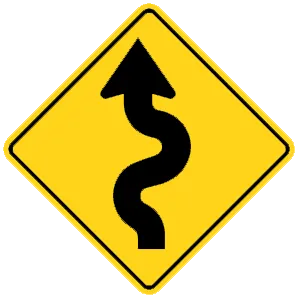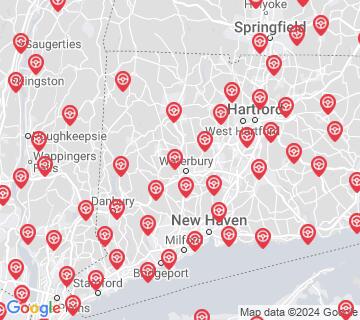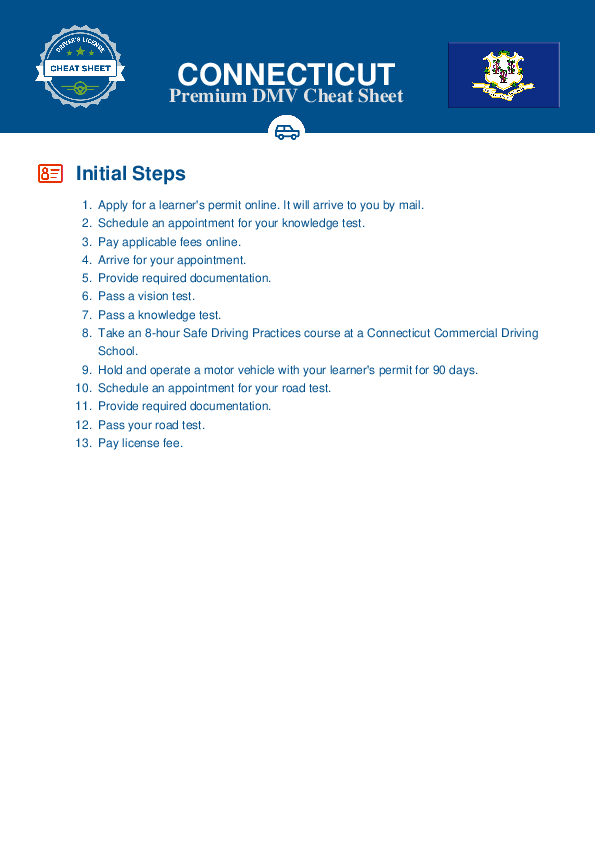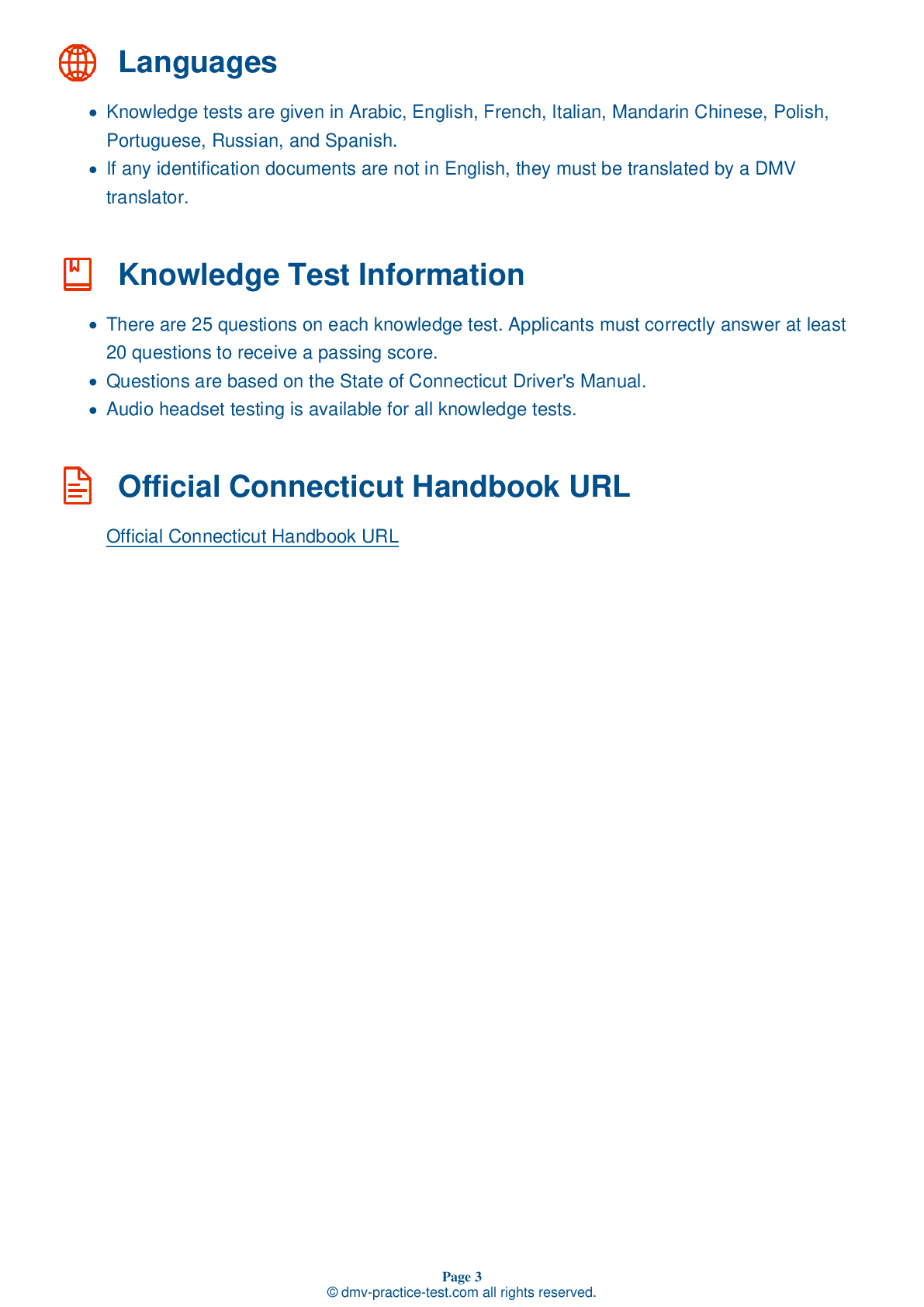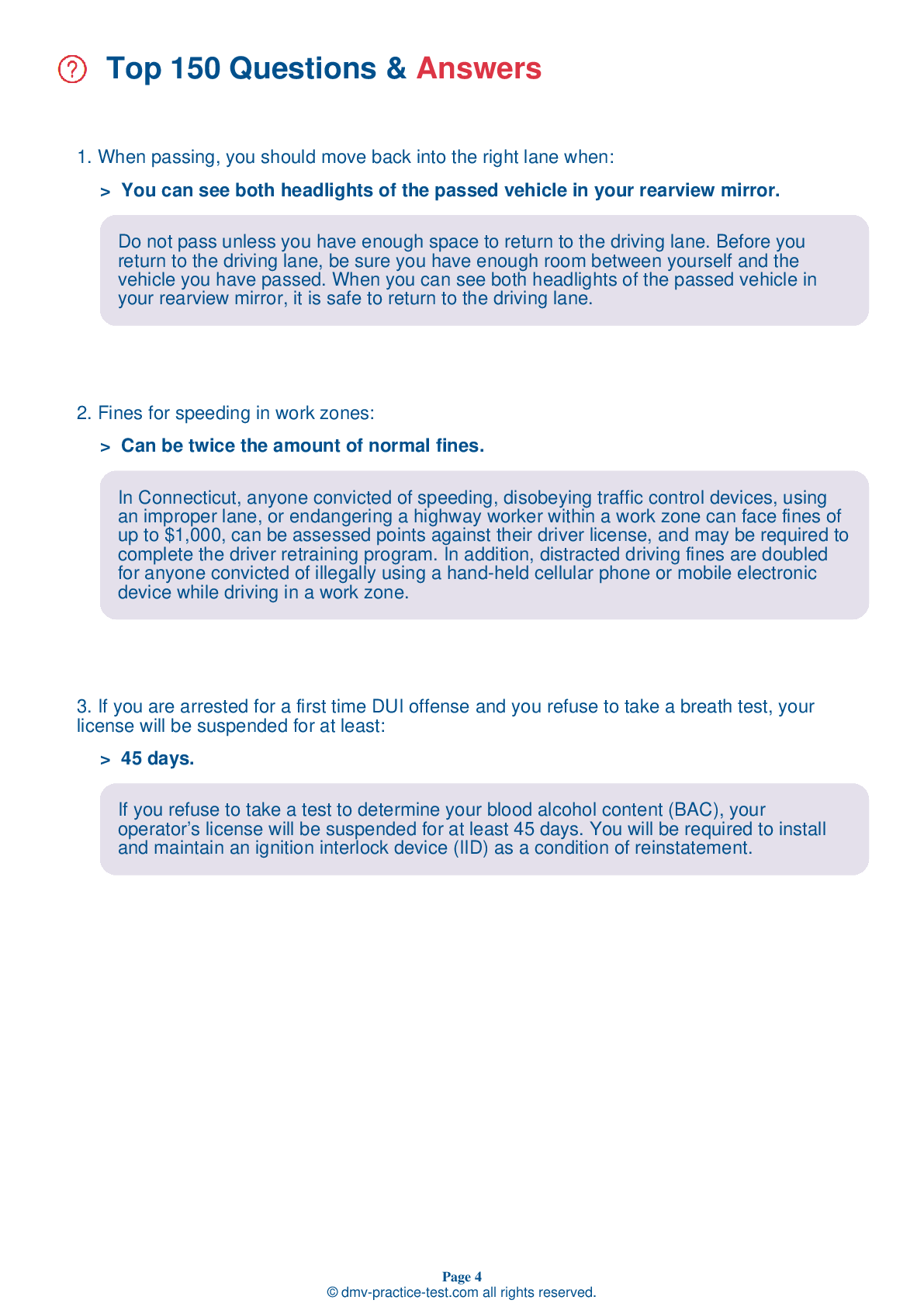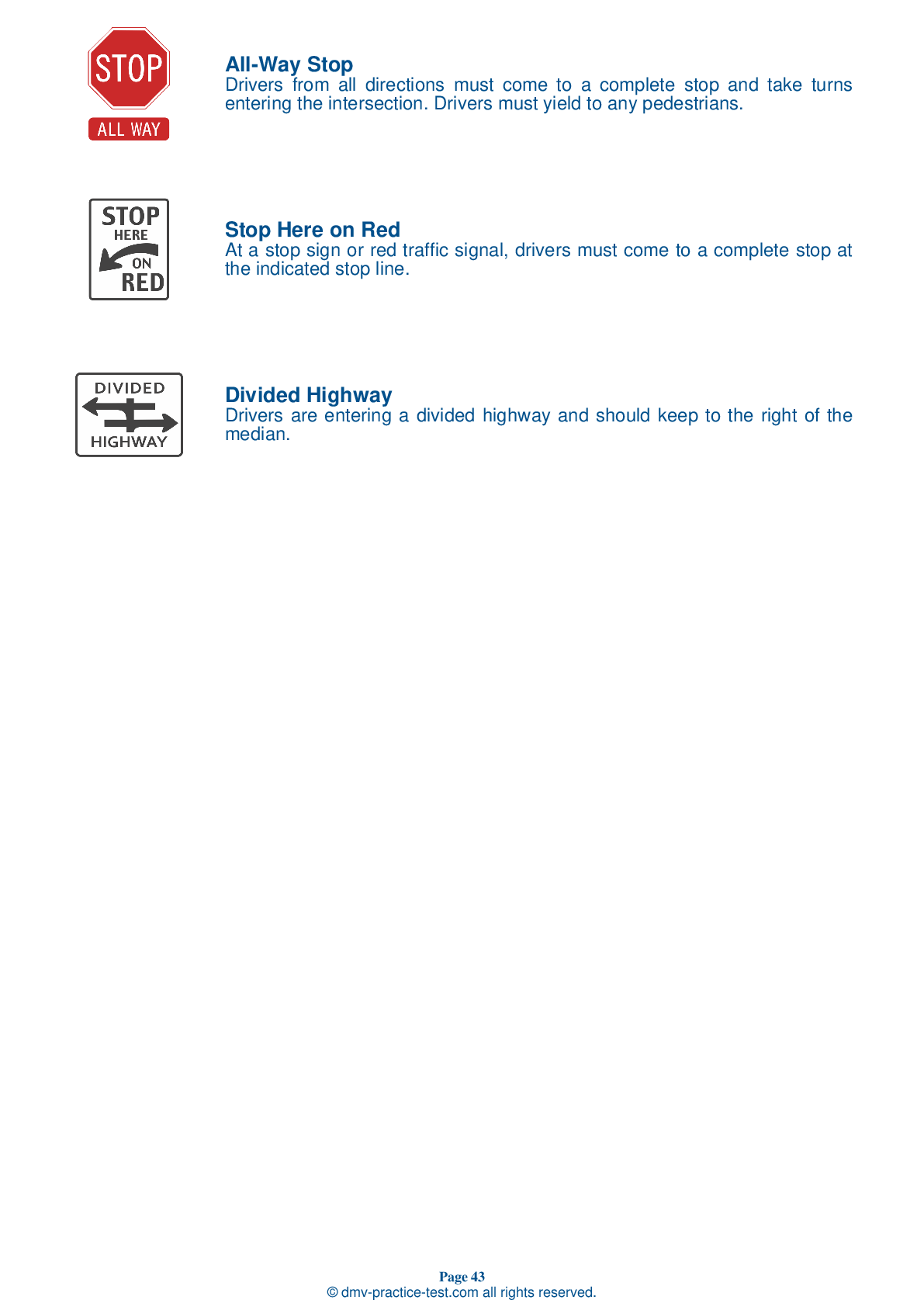FREE Connecticut DMV Practice Test #16
This set of Connecticut DMV practise tests was just updated for January 2025. It includes questions based on the Connecticut Driver Handbook's most essential traffic signs and regulations for 2025. Use actual questions that are very similar (often identical!) to the DMV driving permit test and driver's licence exam to study for the DMV driving permit test and driver's licence exam.
Each practise test question has a hint and explanation to assist you in remembering the concepts. The written component of the official DMV test will include questions about road rules, traffic signs, and driving statutes, as well as information from the Driver Handbook.
To achieve the required passing grade, you must correctly answer 20 of the 25 questions. Take our DMV practise exam to help you prepare for your Connecticut instruction permit or driver's licence.
The DMV exam is available in several languages.
Using any form of testing help will result in an automatic fail, and the DMV may take further action against your driver's licence, so avoid it.
1 . If you are about to be hit from the rear, you should consider each of the following, except for:
If your vehicle is hit from the rear while you are in forward motion, your body will be thrown backward. Press yourself against the back of your seat and put your head against the head restraint to prevent whiplash. Maintain a firm grip on the steering wheel and be ready to apply your brakes to avoid being pushed into another vehicle.
2 . Allow extra space in front of your vehicle when following a:
Allow for extra space when driving behind a motorcycle. Motorcycles can stop more quickly than other vehicles can and you must have adequate room to stop if the motorcyclist brakes or falls off. Also, remember that motorcycles are difficult to see at night because they only have one tail light.
3 . In a vehicle equipped with airbags, the safest place for children age 12 and under to ride is in:
While airbags provide supplemental protection for adults in the event of a crash, they pose a severe safety risk for children. Anyone age 12 or under should sit in the back seat of a vehicle with airbags.
4 . When a school bus is stopped ahead on your side of the road with its red lights flashing, you must:
The flashing overhead lights and stop arm on a school bus will be activated when the bus is stopped to load or unload students. If approaching a bus using these signals, you may not proceed until the red lights have stopped flashing and the stop arm has been retracted. Never pass a school bus that is dropping off or picking up students.
5 . This bicyclist is signaling:
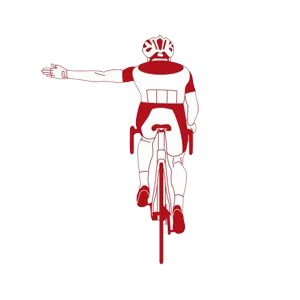
Bicycles do not have turn signals so bicyclists use hand and arm signals to alert other drivers to their intentions. If a bicyclist puts their left arm straight out, they are signaling that they intend to turn left.
6 . This sign tells you that:
